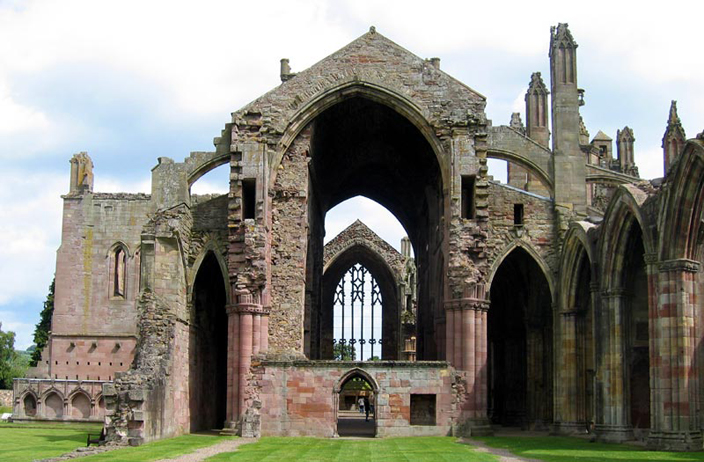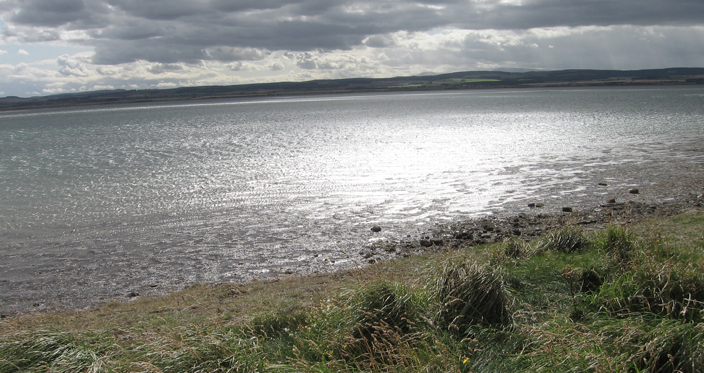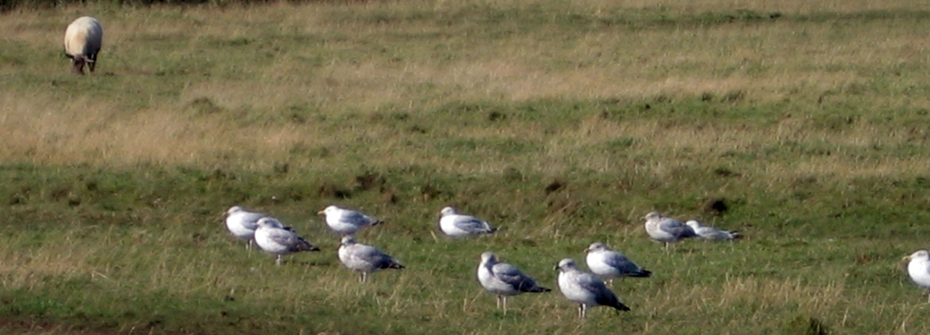St Cuthbert’s Life
Cuthbert’s Early Life
Although tradition says that Cuthbert was the son of an Irish king, it is most likely that he was born in the vicinity of Melrose (in present-day Scotland) in 633. Certainly, we know that he guarded sheep on the hills above the abbey when he was older.
Cuthbert’s Calling
The young Cuthbert may have been influenced by the nearby monks of Melrose Abbey in his choice of vocation; when he was about eighteen he had a vision of the soul being carried to heaven by angels and the next day he learned of the death of St Aidan, the first Bishop of Lindisfarne. This vision may have convinced him to enter holy orders at Melrose, but he did not rush to fulfill his calling.
Instead, Cuthbert spent several years as a soldier, probably in the service of the Kingdom of Northumbria against the attacks of King Penda of Mercia. After that conflict had ended, Cuthbert entered the monastery at Melrose, where his devotion earned him high praise. When a monastery at Ripon was founded, it was Cuthbert who was chosen to be its master.

Cuthbert's Melrose Abbey was raided in 839 and then fell into ruin. It was refounded as a Cistercian abbey in 1136, three miles from its original site, because the land was better for farming there. It was then destroyed and reconstructed several times, but alas, stands in ruin today.
© Jeremy Atherton 2004
Roman versus Celtic
These were years of conflict between the traditions of the Celtic Rite and the Roman Rite in the Catholic Church. In 661 Ripon decided to adopt the Roman approach. Being adherents of the Celtic Rite, Cuthbert and his followers returned to Melrose. Three years later, following the death of his mentor, Prior Biosil, Cuthbert was chosen to succeed him.
An Accommodating Mind
Cuthbert’s reign as prior did not last long; in that same year of 664, the Synod of Whitby settled the ongoing dispute between Roman and Celtic Christianity in favour of the former. Cuthbert acquiesced with the Synod's decision, and adopted Roman rule. He was sent to the Priory of Lindisfarne to ease the transition to Roman tradition there.
A Leader for Change
Cuthbert was a perfect choice for such a sensitive role; his reputation for devotion and sanctity, and the fact that he himself had been raised in the Celtic tradition and now supported Roman rule made his gentle leadership ideal for the job at hand. He spent a great deal of his time at Lindisfarne evangelizing among the people of the area, and exercising the tact and patience for which he was known to lead the conversion to Roman Christianity.

Lindisfarne Island, where Cuthbert lived and preached.
A Retreat to Solitude
Cuthbert's time at Lindisfarne was short, however. He desired the peace of a life of contemplation, and in 676 was granted leave to retire to take up the simple life of a hermit. Just where Cuthbert chose for his retreat is uncertain. Some traditions say that the rocky islet of St Cuthbert's Island, near Lindisfarne, was the spot. Other traditions place him in St Cuthbert's Cave, near Howburn. In any case, he did not stay long, and soon moved to Farne Island, opposite Bamburgh, which was more remote.
A Return to Action
After several years of austere life on Farne, Cuthbert was reluctantly persuaded to return to a more active role in the Church, and became Bishop of Lindisfarne. His consecration was held at York on Easter, 685. He returned to Lindisfarne, but his time was short. By Christmas 686 he felt his death approach, and Cuthbert resigned his see and returned to Farne Island. He died on March 20, 687 and was buried on Lindisfarne.
Find out about Cuthbert's importance after his death.

